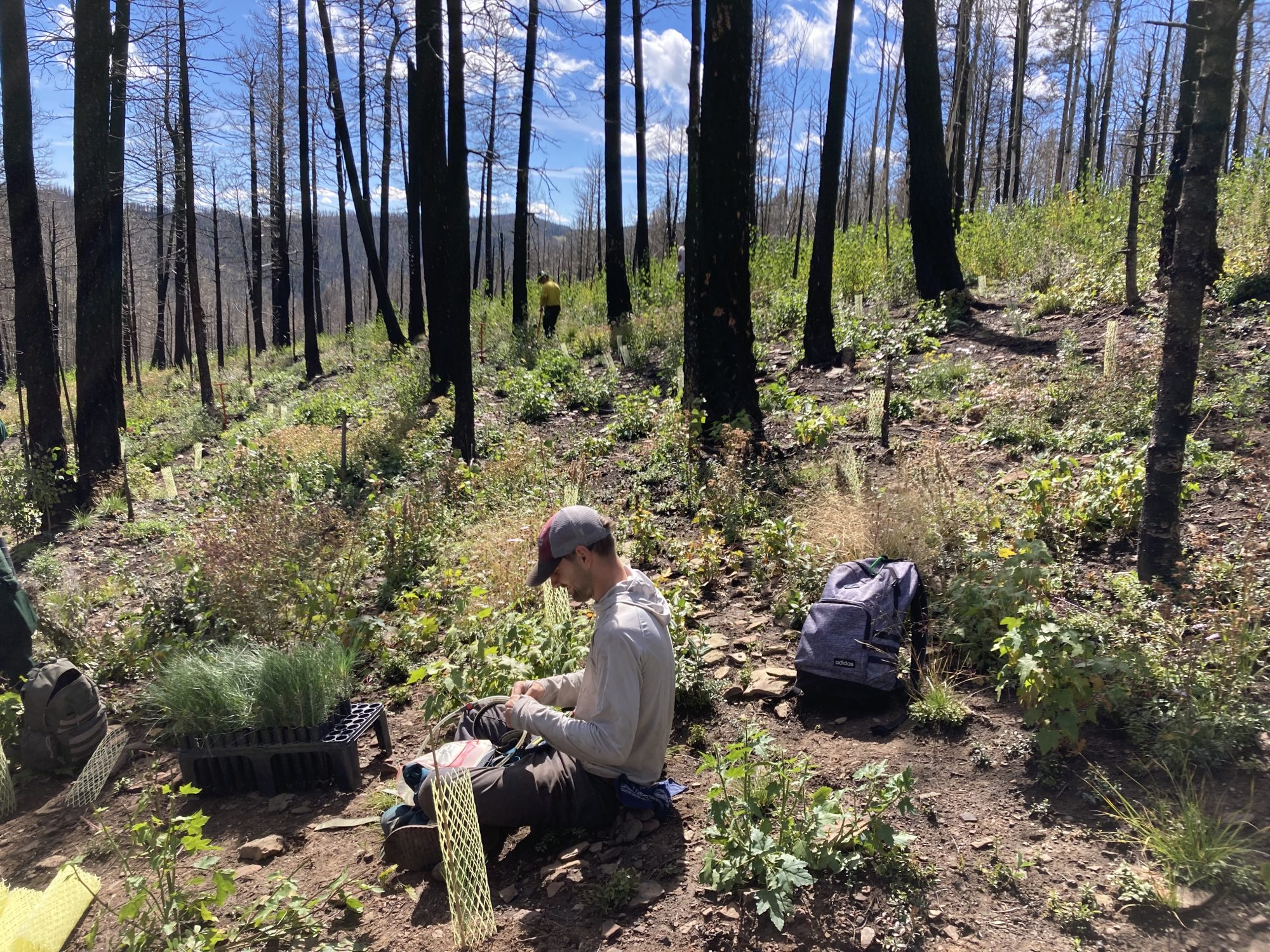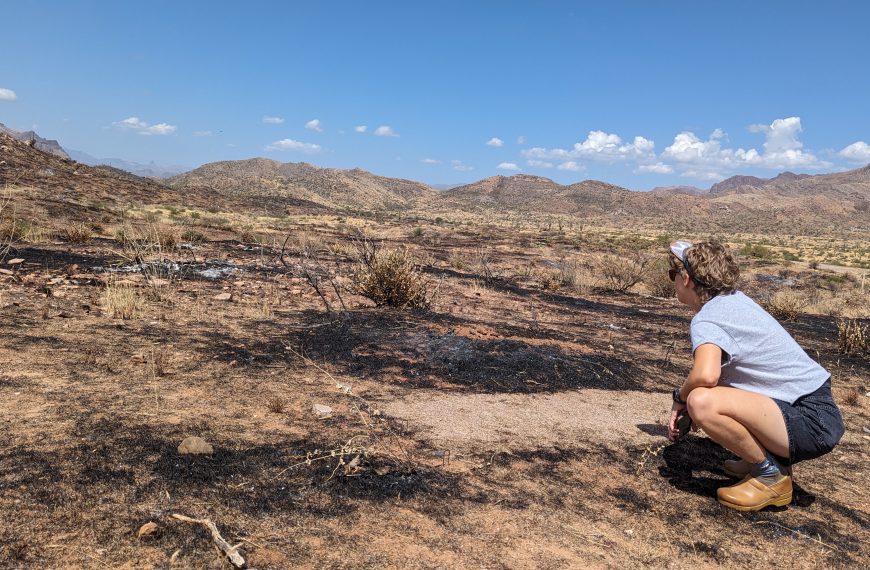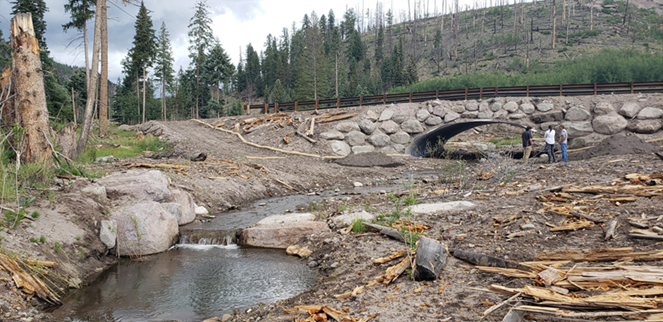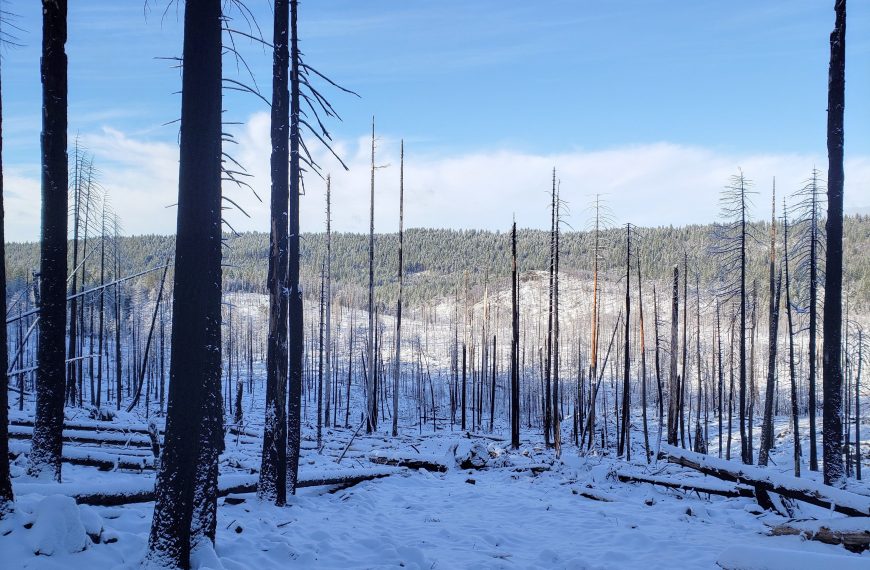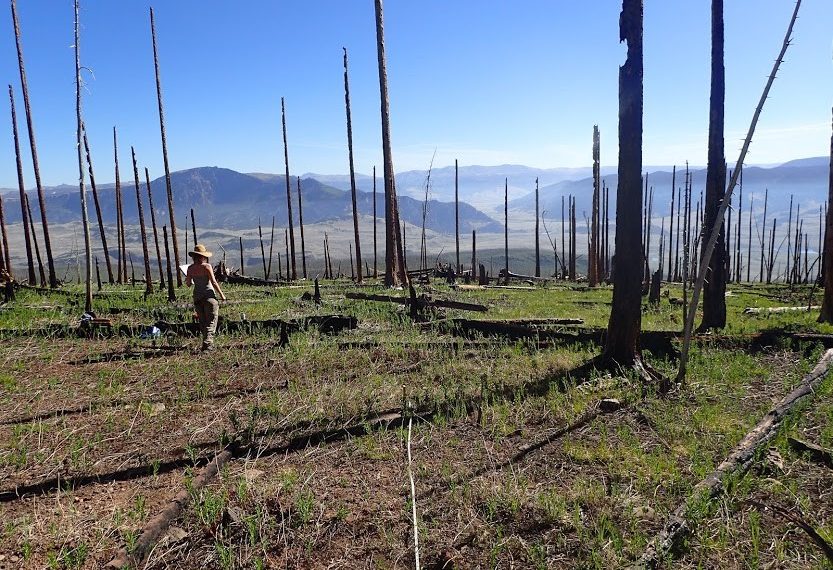In a nutshell: Tips for planting trees after severe fire in the Southwest, we learn how microclimates, nurse plants, and biochar impact survival of seedlings. We also learn how these techniques can be scaled-up to improve replanting efforts across an entire landscape.
Description: Across the southwestern United States, high-severity wildfire is resulting in increasingly large areas of tree mortality, removing the seed sources required for natural regeneration of historically conifer-dominated landscapes. Planting tree seedlings can assist and accelerate reforestation, but the survival rate of planted conifer seedlings is typically low (~25%) in the semi-arid Southwest. This presentation examines how post-fire planting success is influenced by climatic, microclimatic, topographic, and biotic factors. Multiple seedling planting experiments across northern New Mexico were evaluated using seedling monitoring, remote sensing, drone, and microclimate data. The results show tree seedling survival in high severity burn patches is largely determined by microclimatic refugia formed by both topographic variation and existing vegetation. Using machine learning and a new index of seedling survival probability, the most suitable artificial reforestation sites can be mapped for efficient restoration planning. The presenter posits that success rates of reforestation efforts in post-wildfire landscapes could be substantially increased by considering site survivability and suitability.
Presenter: Chris Marsh, Research Assistant Professor, Earth Systems Ecology Lab – University of New Mexico
Recorded on: Jul 25, 2023
This webinar is co-hosted by the Arizona Wildfire Initiative.
Register for all our webinars and get the zoom link delivered automatically to your inbox each month! You can also unsubscribe at this link. REGISTER FOR ALL WEBINARS HERE.

